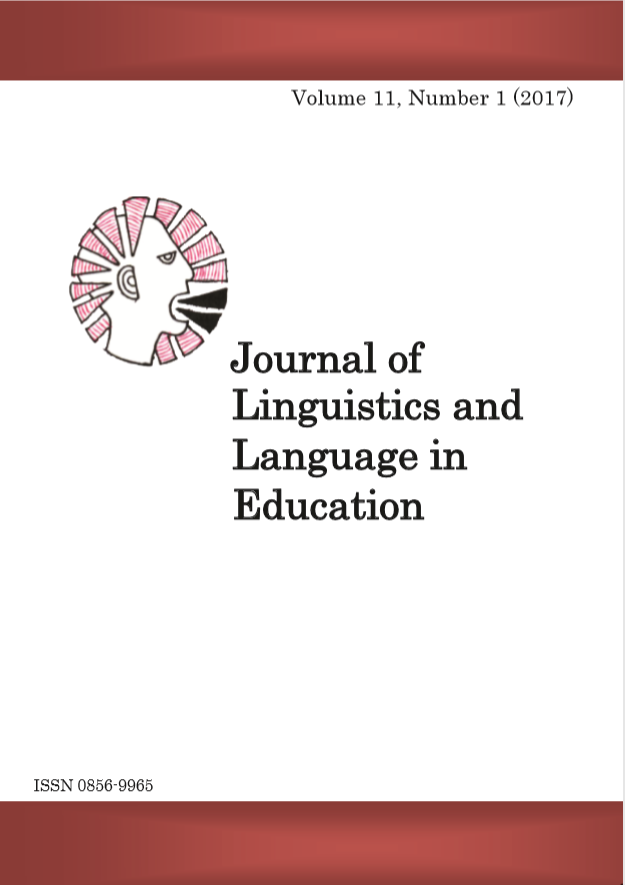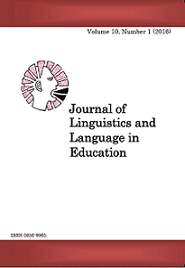Tribal Concealment: A Nomenclatorial Analysis of Herdsmen Discourse in Nigeria Media
Abstract
Abstract
The Fulani herdsmen are nomad who settled in different locations throughout
the country peacefully. The peaceful coexistence between the Fulani herdsmen
and farmers/villagers have been tampered with in the recent time due to the
constant quarrel and attack between and among the sects. The attack is
somewhat monopolised by the Fulani herdsmen. This has make it look like a
Fulani herdsmen attack on their host.Playing their oversight role in the
society, the media is reporting the conflict between the sects and arrogating the
attack to the Fulani herdsmen. Tactically, media has dropped Fulani from the
phrase "Fulani herdsmen" and conceal the tribes ' name while reporting the
conflict. There are existing works on the study of herdsmen/farmers ' conflict in
the academic but there is none that studied tribal concealment in the discourse.
This work therefore considered this a huge vacuum that needs to be filled by
studied different strategies used to conceal Fulani as a tribe in the discourse
and examine the implication of such concealments. Data are collected from two
major Nigerian newspapers, the Vanguard and Punch newspapers. The work is
content based analysis. Critical discourse analysis (CDA) is adopted as the
model and the work is analysed qualitatively. Concealment strategies like
lexical replacement, nominalization, passivisation, hedging, use of pronouns
and name dropping are identified. The work also discovered that the
concealment has social, political and academic implication.
Key words: Fulani, concealment, nomenclatorial, herdsmen discourse, media
References
References
Abbass, I. M. (2014). No Retreat No Surrender Conflict for Survival
between Fulani Pastoralists and farmers in Northern Nigeria.
European Scientific Journal January Edition, 8(1): 1857 €“
Akinyetun, T. (2016). Staff to Gun: Fulani Herdsmen in Nigeria. Asian
Journal of Multidisciplinary Studies, 4(8): 38 €“44.
Joshua Sunday Ayantayo|113
Al-Sharoufi, H. (2013). Critical Discourse Analysis of Political Editorials
in Some Arabic Newspapers.Retrieved from
http.//www.paaljapan.org/resources/proceedings
Amer, M. (2013). Critical Discourse Analysis of War Reporting in the
International Press: The Case of the Gaza War of 2008 €“2009.
Palgrave Communications.
Bello, A. U. (2013). Herdsmen and Farmers Conflicts in North-Eastern
Nigeria: Causes, Repercussions and Resolutions. Academic
Journal of Interdisciplinary Studies, 2(5): 129 €“139.
Cornish, F. (1986). Anaphoric Relations in English and French: A
Discourse Perspective. London: Groom Helm Limited.
Dimelu, M.U. et al. (2017). Livelihood Issues in Herdsmen-
Farmers ' Conflict among Farming Communities in Kogi State,
Nigeria. African Journal of Agricultural Research, 12(24): 2105 €“
Dominic, A. A. (2017). Initiating Sustainable Cattle Industry in Nigeria:
the Saudi Arabian Experience and Implications for Nigeria
Economy. European Journal of Research and Reflection in Arts
and Humanities, Progressive Academic Publishing, UK, 5(1): 43 €“
Hyland, K. (1998). Hedging in Scientific Research Articles. Amsterdam:
Benjamins.Ibrahim, M. et al. (2015). An Assessment of Farmer-
Pastoralist Conflict in NigeriaUsing GIS. International Journal
of Engineering Science Invention, 4(7): 23 €“33.
John, E. (2014). The Fulani Herdsman in Nigeria: Questions,
Challenges, Allegations.
http://elnathanjohn.blogspot.com/2014/03/the-fulani-herdsmanin-
nigeria.html
Jorgensen, M. & Phillips, L. (2002). Discourse Analysis as a Theory and
Method. SAGE Publications, India.
Neary-Sundquist, C. (2013). The Use of Hedges in the Speech of ESL
Learners. Estudios delingüÃstica inglesa aplicada.
Odebunmi, A. (2011). Concealment in Consultative Encounters
inNigerian Hospitals. InternationalPragmatics Association,
Pragmatics, 21(4): 619 €“645.
Okoli, A. C. (2016). The Trajectories and Dynamics of Herdsmen
Militancy in Central Nigeria. Journal of Humanities and Social
Policy, 2(1): 22 €“30.
Okoli, A. C. & Atelhe, G. A. (2014). Nomads against Natives: A Political
Ecology of Herder/Farmer Conflicts in Nasarawa State, Nigeria.
American International Journal of Contemporary Research, 4(2):
-88.Okwor, D. (2016). The Political Economy of the Conflict
betweenThe Farmers and Fulani Herdsmen in the Contemporary
Era of Climate Change in Nigeria.Unpublished Dissertation,
Institute of Social Studies, Netherlands.
| Tribal Concealment
Ramanathan, R. & Bee, H. T (2015). Application of Critical Discourse
Analysis in Media Discourse Studies.The Southeast Asian
Journal of English Language Studies, 21(2): 57 €“68.
Richardson, J. E. (2007). Analysing Newspapers. An Approach from
Critical Discourse Analysis. Basingstoke [England]; New York:
Palgrave Macmillan.
Stride, G. T. & Ifeka, C. (1973). Peoples and Empires of West Africa:
West Africa in History 1000-1800; Lagos: Thomas Nelson
(Nigeria) Ltd.
Tenuche, M. S. & Ifatimehin. O. (2009). Resource Conflict among
Farmers and Fulani Herdsmen: Implications for Resource
Sustainability. African Journal of Political Science and
International Relations, 3(9): 360 €“364.
Tomasello, M. (2009). Social-Cognitive Basis of Language Development.
In Mey, J. (ed.). ConciseEncyclopedia of Pragmatics (2nd edition).
-962. New York: Elsevier Limited.
Van Dijk, T. A. (1993). Principles of Critical Discourse Analysis.
Discourse and Society. 4(2): 249 €“83.
Van Dijk, Teun (2000): New(s) Racism: A Discourse Analytical
Approach. In Simon Cottle (ed.) Ethnic Minorities and the Media.
Milton Keynes: Open University Press: 33 €“4.
Downloads
Published
Issue
Section
License
Copyright © by Department of Foreign Languages and Linguistics, University of Dar es Salaam
All rights reserved. No part of this publication may be reproduced or transmitted in any form or by any means, electronic or mechanical, including photocopying, recording, or any information storage or retrieval system, without permission in writing from the publisher, except for short extracts in fair dealing, for research or private study, critical scholarly review or discourse with an acknowledgement.



